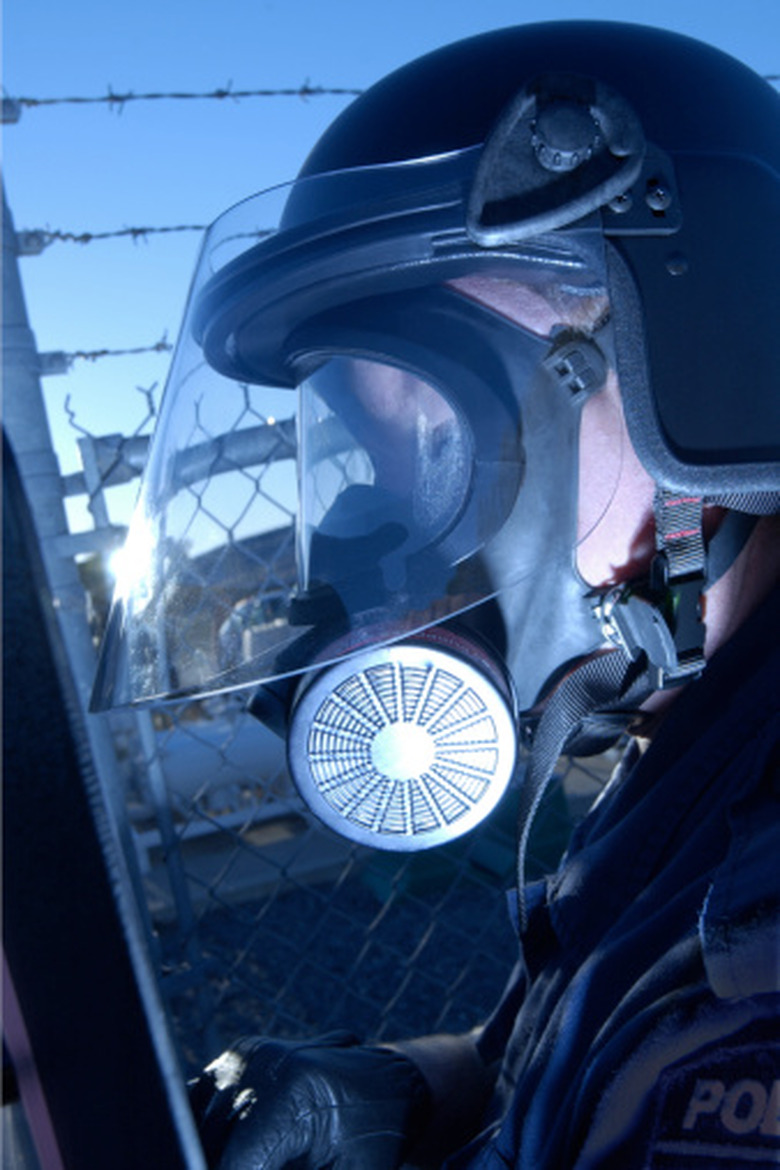Uses Of Soda Lime
Soda lime is a caustic alkali, consisting primarily of calcium hydroxide with smaller amounts of potassium hydroxide and sodium hydroxide. Its most notable characteristics are its ability to absorb moisture from its environment, and its ability to absorb various gases including carbon dioxide. Soda lime is highly toxic if inhaled or swallowed, and must be used with care.
Medical Uses
Medical Uses
Soda lime's ability to absorb carbon dioxide makes it valuable in the medical and surgical professions. Many anesthesia systems, for example, recirculate the patient's breath through a soda lime filtration system. Carbon dioxide is filtered out, leaving behind oxygen which can be routed back to the patient. Lime for breathing systems is pelletized into small spheres or broken rods, minimizing any risk that the caustic chemical will be inhaled.
Gas Masks
Gas Masks
One specialized use of soda lime's ability to absorb gases is in the construction of gas masks. Models used in both world wars used a combination of activated charcoal and soda lime to absorb potentially harmful gases. Charcoal was the first line of defense, but the soda lime absorbed weaponized gases such as phosgene that were unaffected by the charcoal.
Desiccant
Desiccant
Soda lime's ability to absorb moisture makes it a powerful drying agent, or desiccant, in commercial and industrial usage. Its toxicity and caustic nature make it unsuited for consumer use, where silica gel is preferred, but it is used in a number of industrial processes. It can be prepared in sealed, moisture permeable packages, or sachets, or in some cases incorporated directly into a compound during mixing. Soda lime works more slowly than silica gel, but can achieve lower levels of humidity.
Closed Environments
Closed Environments
Soda lime's proficiency at removing carbon dioxide from air, leaving the oxygen behind, makes it a crucial part of CO2 "scrubbers," or rebreathing systems. These are used to keep air breathable when circulation with outside air is impossible, as is the case in submarines or space vehicles. Helmet-sized rebreather units can be used for diving as well, eliminating the need for heavy tanks for shorter dives. Rebreathing units are also built into many hyperbaric chambers, used by divers to avoid the "bends" when they've had to surface too quickly.
Cite This Article
MLA
Decker, Fred. "Uses Of Soda Lime" sciencing.com, https://www.sciencing.com/uses-soda-lime-8697346/. 24 April 2017.
APA
Decker, Fred. (2017, April 24). Uses Of Soda Lime. sciencing.com. Retrieved from https://www.sciencing.com/uses-soda-lime-8697346/
Chicago
Decker, Fred. Uses Of Soda Lime last modified March 24, 2022. https://www.sciencing.com/uses-soda-lime-8697346/
